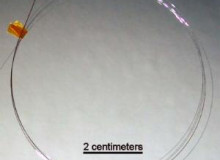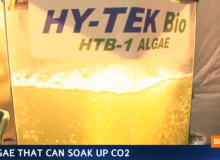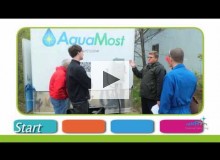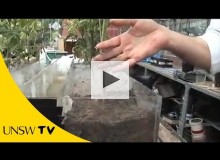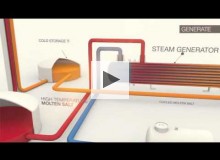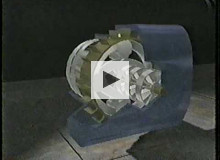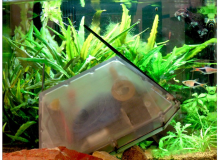Technology
The Pennsylvania State University
This is the first silicon-based optical fiber with solar cell characteristics
A team of researchers is working on solar cell fabrics that could catch sunlight from various angles and one day power devices like smartphones.
John Badding, a professor... Read More
This week on Bloomberg West, Planet Forward's Frank Sesno explores the how algae can be used to consume harmful greenhouse gases and produce clean energy.
Piezoelectric energy is created by the process of vibrations, friction, or static between solid materials. This can be obtained through a variety of methods, such as the friction of tires on the road, or the movement of shoes across a surface that... Read More
Environmental and Energy Study Institute
The Environmental and Energy Study Institute (EESI) and the American Council On Renewable Energy (ACORE) organized a briefing about the important and growing role that renewable energy plays in the American energy mix. Renewable energy resources –... Read More
UNSW Australia
Because there is less water available during a drought, water often picks up more minerals from the soil or ground and becomes saltier. These researchers in Australia say that their technology can efficiently filter water and remove salts so plants... Read More
SolarReserve
Mirrors aren't just for making sure you look good! These innovators are using mirrors to concentrate sunlight in order to generate heat. Then, using a system based on molten salt, that heat can be converted in usable electricity!
Environmental Commission of Monterey Park
Have the local chamber of commerce sponsor an environmental high school film contest on the subject of carbon footprint. The event will bring together students, teachers, parents, school administrators, philanthropists, elected officials, promoters... Read More
Individual Inventor/Self Taught
Thermodynamic Technology Development - Atypical InFlow Device
GEARTURBINE PROJECT
Atypical InFlow Thermodynamic
Technology Proposal Submission
Innovative [TURBO-ROTARY]
Novel Fueled Motor Engine Type
National Science Foundation
The University of Minnesota's Center for Distributed Robotics is developing an amphibious robotic system, the Aquapod, to monitor the impact of oil on swamps and marshland.
Robust, highly mobile amphibious robots have the potential to assist... Read More

